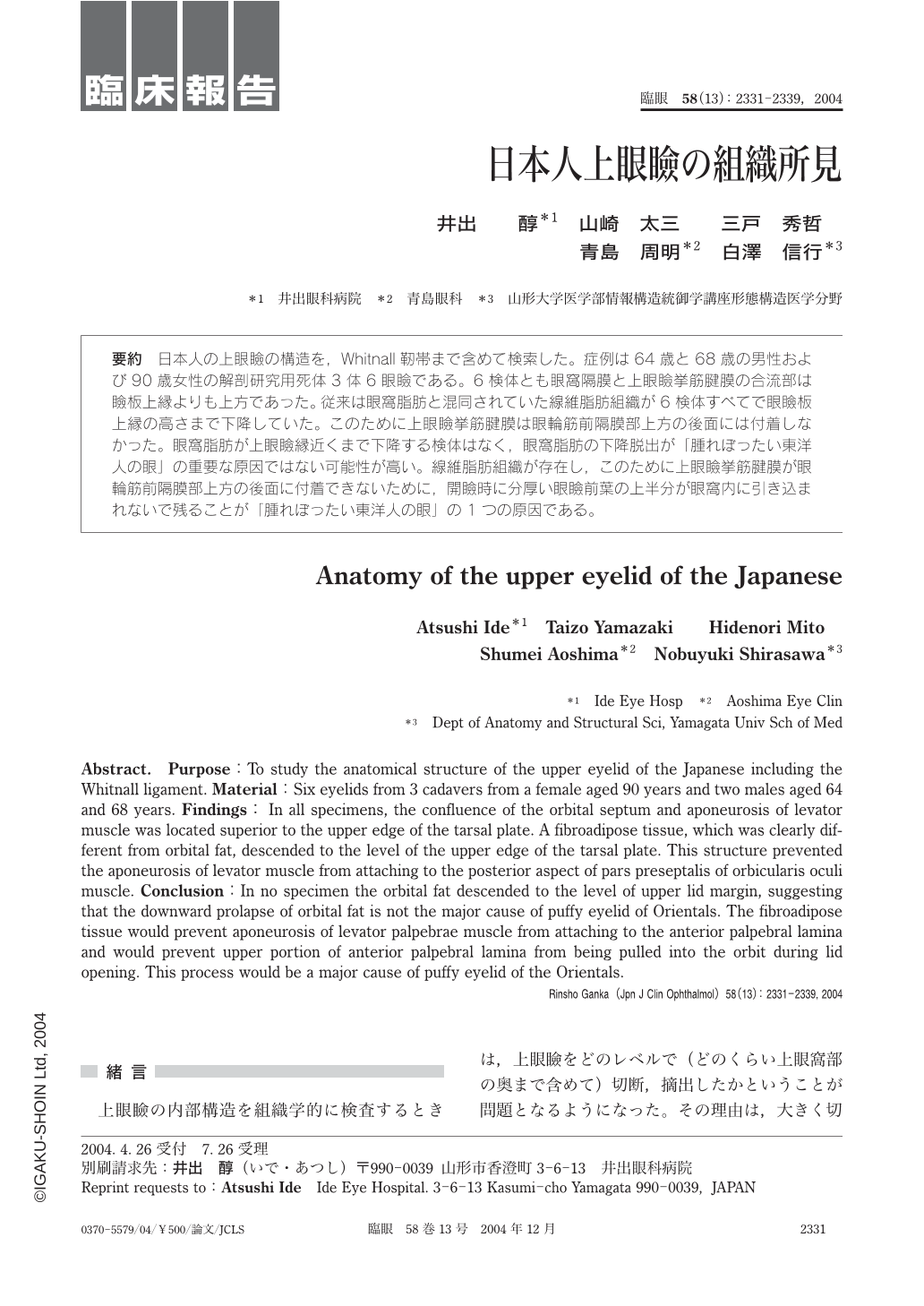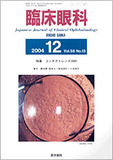Japanese
English
- 有料閲覧
- Abstract 文献概要
- 1ページ目 Look Inside
日本人の上眼瞼の構造を,Whitnall靭帯まで含めて検索した。症例は64歳と68歳の男性および90歳女性の解剖研究用死体3体6眼瞼である。6検体とも眼窩隔膜と上眼瞼挙筋腱膜の合流部は瞼板上縁よりも上方であった。従来は眼窩脂肪と混同されていた線維脂肪組織が6検体すべてで眼瞼板上縁の高さまで下降していた。このために上眼瞼挙筋腱膜は眼輪筋前隔膜部上方の後面には付着しなかった。眼窩脂肪が上眼瞼縁近くまで下降する検体はなく,眼窩脂肪の下降脱出が「腫れぼったい東洋人の眼」の重要な原因ではない可能性が高い。線維脂肪組織が存在し,このために上眼瞼挙筋腱膜が眼輪筋前隔膜部上方の後面に付着できないために,開瞼時に分厚い眼瞼前葉の上半分が眼窩内に引き込まれないで残ることが「腫れぼったい東洋人の眼」の1つの原因である。
Purpose:To study the anatomical structure of the upper eyelid of the Japanese including the Whitnall ligament. Material:Six eyelids from 3 cadavers from a female aged 90 years and two males aged 64 and 68 years. Findings:In all specimens,the confluence of the orbital septum and aponeurosis of levator muscle was located superior to the upper edge of the tarsal plate. A fibroadipose tissue,which was clearly different from orbital fat,descended to the level of the upper edge of the tarsal plate. This structure prevented the aponeurosis of levator muscle from attaching to the posterior aspect of pars preseptalis of orbicularis oculi muscle. Conclusion:In no specimen the orbital fat descended to the level of upper lid margin,suggesting that the downward prolapse of orbital fat is not the major cause of puffy eyelid of Orientals. The fibroadipose tissue would prevent aponeurosis of levator palpebrae muscle from attaching to the anterior palpebral lamina and would prevent upper portion of anterior palpebral lamina from being pulled into the orbit during lid opening. This process would be a major cause of puffy eyelid of the Orientals.

Copyright © 2004, Igaku-Shoin Ltd. All rights reserved.


